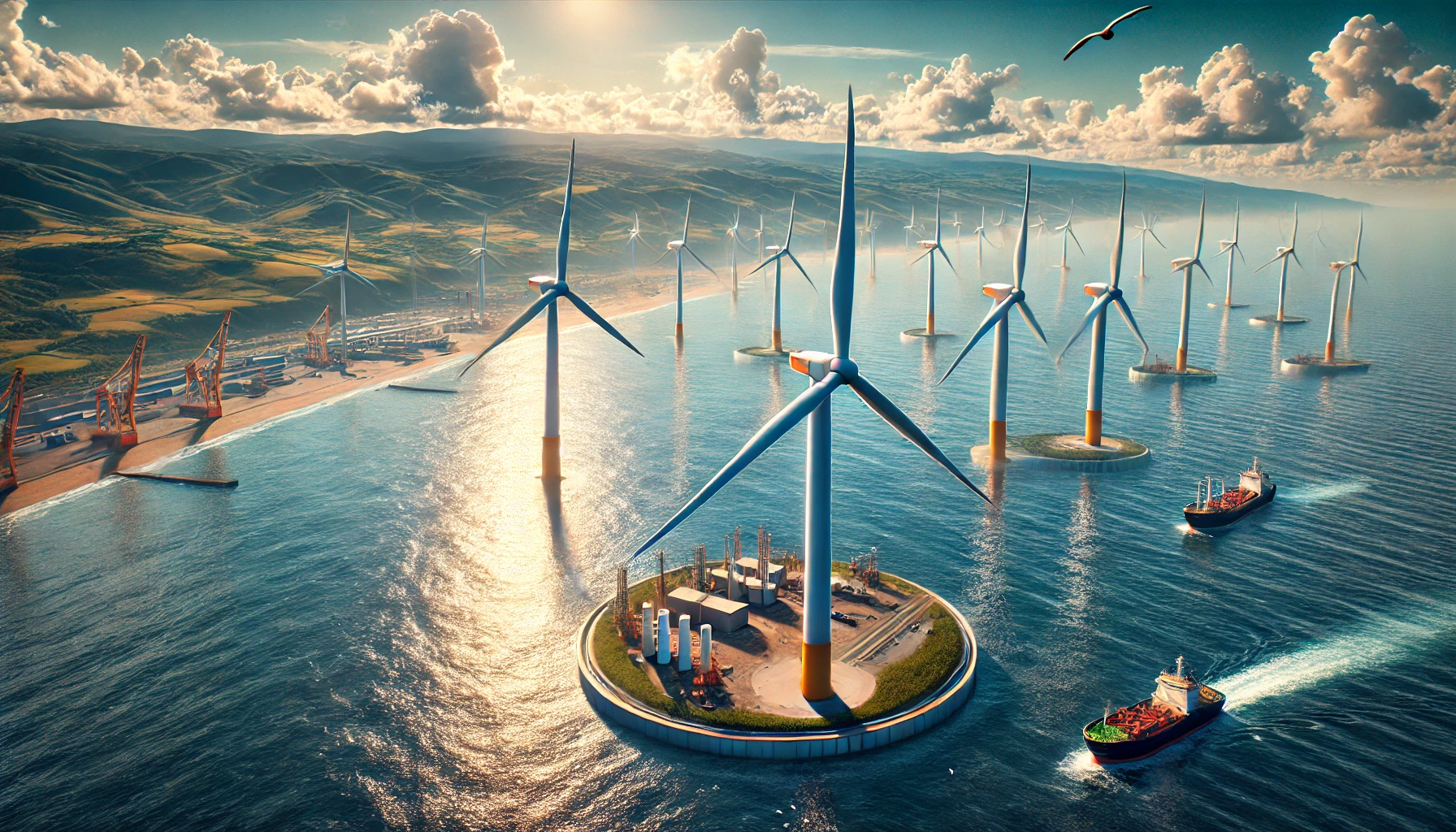Romania’s Offshore Wind Roadmap: Driving Green Energy and Economic Progress
The World Bank's Offshore Wind Roadmap for Romania outlines the potential to develop up to 7 GW of offshore wind capacity by 2035, providing significant energy security, economic growth, and job creation. It emphasizes strategic infrastructure investments, environmental safeguards, and financing mechanisms to support Romania's renewable energy transition.

The Offshore Wind Roadmap for Romania was developed by the World Bank with the financial assistance of the European Union under the Structural Reform Support Programme. It highlights Romania's potential to become a key player in offshore wind (OSW) energy production, with the roadmap suggesting two possible growth scenarios. The World Bank’s team, in collaboration with several other key stakeholders, including the Ministry of Energy in Romania and industry experts, outlines the country’s readiness to build offshore wind capacity, to reach up to 7 GW of energy by 2035. This capacity would place Romania among significant producers of renewable energy in Europe, leveraging the relatively underdeveloped wind resources of the Black Sea. Although Romania already has 3 GW of onshore wind energy capacity, the report highlights the possibility for offshore wind to make a substantial contribution to the country’s future energy mix and economic development.
A Shift Toward Renewable Energy
In terms of current renewable energy, Romania’s energy landscape has shifted considerably in the last two decades, transitioning from a fossil-fuel-dominated system to one where renewable sources provide over half of the energy. The offshore wind potential, as laid out in the report, offers Romania a chance to expand its renewable energy supply even further, creating not only energy security but also thousands of jobs and a significant reduction in CO2 emissions. The roadmap emphasizes two growth pathways: the low-growth scenario and the high-growth scenario. In the low-growth scenario, Romania would add 3 GW of offshore wind capacity by 2035, which would account for 16% of the nation’s electricity. In contrast, the high-growth scenario would see 7 GW of installed capacity by the same time, contributing 37% of Romania’s electricity needs. These scenarios are designed to give policymakers and stakeholders a clear view of the country’s possible renewable energy future, factoring in technical, environmental, and social challenges.
Romania’s Strategic Location and Infrastructure
A key factor in the potential success of Romania’s offshore wind ambitions is its geographic position and existing infrastructure. The Black Sea, though not as windy as the North Sea or the Atlantic coasts of Western Europe, still offers enough wind energy to make Romania a regional leader. Furthermore, the country's large port facilities, particularly the port of Constanța, are well-suited to support the infrastructure needed for offshore wind projects. The roadmap identifies this port as a critical asset but also calls for targeted upgrades to ensure it can handle the construction, installation, and long-term maintenance of offshore wind farms. These upgrades will be vital for supporting the higher levels of activity anticipated in the high-growth scenario, where larger projects will be installed and maintained over several decades.
Environmental Considerations and Biodiversity Protection
The roadmap does not ignore the potential environmental impacts of offshore wind development. With significant protected areas along Romania’s coast, particularly in the vicinity of the Danube Delta, the report stresses the importance of conducting Strategic Environmental Assessments (SEAs) to ensure that offshore wind farms do not harm migratory bird routes or marine life, including dolphins and porpoises. The report recommends that Romania follow Good International Industry Practices (GIIP) when it comes to environmental management, ensuring that projects balance economic benefits with biodiversity conservation.
Job Creation and Economic Benefits
Another important aspect of the roadmap is its emphasis on economic and job growth. In the high-growth scenario, it is estimated that Romania could create up to 77,000 full-time equivalent jobs by 2035. This would not only come from the construction and operation of wind farms but also from the development of a local supply chain. Romania has the potential to manufacture wind turbine components, such as towers and substations, and export them to other markets in the region. This expansion in manufacturing capability could make Romania a regional hub for offshore wind development, with benefits that extend far beyond the energy sector itself. In addition, the high-growth scenario suggests a potential for Romania to avoid 230 million metric tons of CO2 emissions by 2050, significantly contributing to global efforts to combat climate change.
Financing the Future of Offshore Wind
The roadmap also outlines the financial needs required to achieve these goals. The total capital expenditure for the high-growth scenario is estimated at around €19 billion by 2035. The report recommends that Romania explore various financial mechanisms, including the European Union's Modernisation Fund and the Recovery and Resilience Facility, to support these large-scale infrastructure investments. Securing this financing will be essential for Romania to build the necessary grid connections and upgrade its port facilities, ensuring that offshore wind projects can be delivered on time and within budget.
The World Bank’s Offshore Wind Roadmap for Romania presents a comprehensive vision for how the country can become a leader in offshore wind energy. Through clear government policies, strategic infrastructure investments, and careful environmental planning, Romania could generate a significant portion of its electricity from offshore wind by 2035, while also creating jobs and reducing its carbon footprint. The roadmap calls for immediate action from the Romanian government to set clear targets and begin the necessary planning processes, as delays could jeopardize the country’s ability to capitalize on this opportunity.
- FIRST PUBLISHED IN:
- Devdiscourse
ALSO READ
UPDATE 1-Thousands attend pro-European rally in Romania ahead of presidential run-off vote
Thousands attend pro-European rally in Romania ahead of presidential run-off vote
UPDATE 3-Romanian top court annuls presidential election result
Romanian President Iohannis to stay on until new president elected
NEWSMAKER-Calin Georgescu, the man at the centre of Romania's cancelled election










